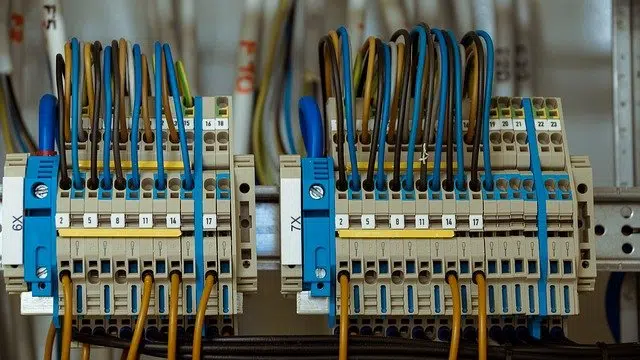
Electric potential is the work needed to move a positive charge from one point to another.
The notion of potential can be used in various ways. As an adjective, it refers to something that has potency , virtues or power . Potential can also be a type of magnitude that indicates changes in other different magnitudes. Electrical , on the other hand, is something that has or transmits electricity , or that manages to function thanks to it.
The work that an electrostatic field has to carry out to move a unitary positive charge from one point to another is known as electric potential . It can be said, therefore, that the work to be done by an external force to move a charge from one reference point to another is the electric potential.
It is worth mentioning that this concept should not be confused with that of electrical potential energy , although both are related in some cases, since the latter is the energy that a system of electrical charges has according to its position.
Electric potential formula
As a formula , it is indicated that the electric potential from a point X to a point Y is the work necessary to move the unit positive charge q from X to Y. Volts and joules (or joules ) are the units used to express electrical potential.
It is important to consider that the concept of electric potential is based on the idea of what is known as a conservative field , where there is a force with a tendency to compensate for the field's own strength so that the charged particle remains in static equilibrium. If the intention is to work with charges that are in motion, it is necessary to appeal to Liénard-Wiechert potentials .
Point in a circuit
Within the framework of an electrical circuit , the electrical potential existing at a point reflects the energy that the charge units have when passing through the point in question. When the charge unit travels through the circuit like an electric current, it loses energy as it passes through the different components.
This loss of energy will have different manifestations through work such as the lighting that appears in a lamp or the movement that is achieved in a motor, to name two possibilities. To recover energy, the load must pass through a voltage generator.

Electric potential can be expressed in volts.
Electric potential difference
If we have a positive test charge (which we will call q sub zero ) with an electric field , and it moves from point A to point B , maintaining equilibrium without exception, then the work that has to be done by the agent that transfers the charge must be measured with the formula shown in the image, which is called electric potential difference .
Said work ( W sub AB ) can have a negative, positive or zero value , and the electric potential corresponding to B can be less, greater or equal, respectively, to the potential of A. According to the International System of Units ( SI ), to which all countries in the world except the United States, Liberia and Burma respond, the electric potential difference must be represented with Joule / Coulomb , which is equivalent to 1 volt .
The volt
The energy acquired for an electron moving across an electric potential difference of 1 volt is called an electron volt ( eV ). When larger units of energy become necessary, it is possible to take advantage of the kiloelectronvolt , the megaelectronvolt or the gigaelectronvolt .
If this definition is applied to circuit theory , it is possible to point out that the electric potential at a point is nothing other than the energy of each unit of charge at the moment in which it crosses said point of the circuit. Therefore, if the unit charge passes through a circuit and becomes an electric current, it gradually loses its energy.
